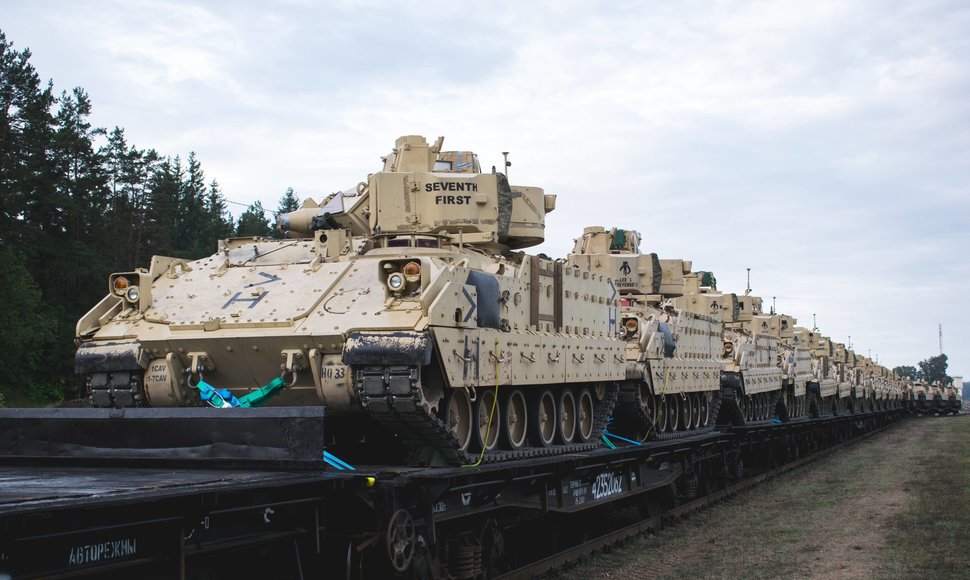“We feel a significant demand for the creation of infrastructure adapted to carrying military equipment. After all, we are members of NATO, and our country often hosts NATO military units which bring military equipment to exercises here. Railways are the most convenient means of transportation for such travel because it allows for rapid redeployment of equipment without forming traffic congestion on the roads, and so while planning Rail Baltica, we are also taking into account the needs of the military,” says LTG director general Karolis Sankovski.
At the moment, planning has begun for four military equipment logistics lots, which will allow facilitated unloading and loading of equipment onto trains. Two lots are planned next to the planned European gauge railway line’s section Polish-Lithuanian border – Kaunas, with one being next to Kazlų Rūda and one near Kaunas intermodal terminal in Palemonas.
Another two military equipment logistics lots are being planned next to the Rail Baltica Kaunas line at the Lithuanian-Latvian border, which will be located near to Jonava and Panevėžys.
“This is a strategic project for our country, which emphasises the importance of military mobility and a suitable railway system for the security of Lithuania, and for collective defence. The development of this infrastructure will facilitate the arrival of allied troops and equipment to Lithuania, and rapid and effective allied movement into Lithuanian territory serves to strengthen the country’s security. In turn, improvements in military mobility, and the increase in Lithuania’s support capacity as a recipient allied country remain some of the most important priorities of the Lithuanian national defence system,” acting Vice Minister of National Defence Eimutis Misiūnas says.
At the moment, NATO military equipment en route to Lithuania is reloaded onto wide gauge carriages on the border with Poland at Šeštokai terminal. Following the implementation of the Rail Baltica project, NATO allies will be able to transport equipment to exercises more conveniently and at higher speed.
It is planned for each military equipment logistics lots to be able to receive three 750m long trains, which will bring up to 300 units of heavy military equipment. All military equipment logistics lots will be adapted to load heavyweight equipment from rail transport onto road transport, and vice versa.This will be connected to the Lithuanian state-level road network, with fencing and security systems alongside other necessary infrastructure also being installed.
“Comprehensive national security is both in the economic and defence sense, one of the most important priorities in the implementation of the Rail Baltica project. Rail Baltica is an excellent example of how the development of economically important infrastructure, while ensuring its effective and safe management, also improves national security,” Vice Minister of Transport and Communications Gytis Mažeika says.
It is planned that the military lots will be set up by 2026, alongside the full completion of the Rail Baltica project.
Rail Baltica is the largest infrastructure project in the Baltic region over the past century. The modern European gauge railway link will provide a rapid, comfortable, safe and low environmental impact alternative to passenger and cargo transport, which will connect Tallinn, Pärnu, Riga, Panevėžys, Kaunas, Vilnius and Warsaw. When Rail Baltica is completed, modern electrical trains will start running on its tracks.
Currently, the most active works are ongoing at Kaunas railway junction, which when adapted for Rail Baltica, will allow for the railway to be laid down further toward Vilnius and the Lithuanian-Latvian border.












